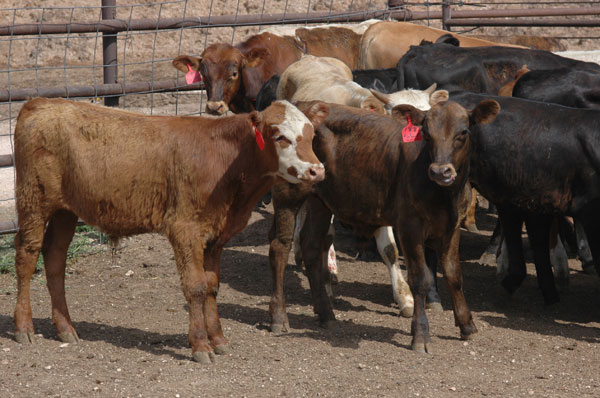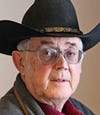Marketing your calves in 2020 — Plan B
It makes a difference when a heifer is born in the cattle cycle. That’s because the most profitable cows are those females reaching their peak production at 4 to 6 years of age at or just before the peak in the price cycle, and culled in or just after the peak price year. Will 2019 replacement heifers ever be profitable?
February 29, 2020

Marketing 2019 calves was the primary question on my study herd rancher’s mind as I sat down for our December management meeting. He requested we focus on preparing a marketing plan for all of his 2019 calf crop. I was anticipating that question, so I had done some homework before the meeting.
December’s market analysis. The first item on the agenda was a review of market prices. Lightweight calf prices were a little stronger in mid-December compared to mid-October’s weaning prices.
Heavier feeder prices, on the other hand, were a little weaker in December. January feeder price projections were slightly stronger in December compared to October. These revised planning prices were entered into current budget projections used in this management discussion. We then turned our discussion to marketing each group of 2019 calves.
2019 replacement heifers. These heifer calves born in 2019 will be developed and bred in 2020, calve the first time in 2021, and then they should calve through 2027 and be culled in 2027 under the assumption of seven calves in a lifetime — certainly subject to debate. I tend to use a seven-calf lifetime in all of my economic analyses, knowing very well that some females will drop out due to being open before the seventh calf.
I project that these 2019 replacement heifers will cost $1,336 to develop through preg-check in 2020. This includes the market value at 2019 weaning, plus all development costs including breeding value thru preg-check in fall 2020. I then transfer these preg-checked females into the mature cow herd.
Somehow we need to net this $1,336 heifer cost from her through the lifetime calves produced plus her salvage value. In some years of the price cycle, salvage value of a replacement heifer can almost equal the net incomes generated from the heifer’s lifetime calves.
The Food and Agricultural Policy Research Institute (FAPRI) at the University of Missouri has published long-run price projections for much of the next cattle cycle. It projects a gradual price increase from 2020 through 2028, suggesting a far less dramatic cycle than the last cycle.
I currently question if a 2019 heifer calf can be developed into a commercial cow that will make the owner any money.
The idea is that the most profitable cows are those females reaching their peak production at 4 to 6 years of age at or just before the peak in the price cycle, and are culled in or just after the peak price year. Females calving in the early years of the cattle cycle tend to make considerably less profit.
This argument has some validity with respect to the study herd rancher’s 2019 replacement heifers. In summary, it makes a difference when a heifer starts calving in the beef price cycle.
Replacement heifers are the hardest group to analyze at this time, and I need more time to do a thorough analysis of this group of animals. In past cycles, the heifer calves born in low-price years of the cycle have been culled before the peak price time in the price cycle.
I have previously documented that these are not the most profitable retained heifer calves. It is fairly clear, at least to me, that a profitable replacement heifer needs to calve into the price cycle peak, and then be culled at or just past that price cycle peak.
I need to conduct a full-scale analysis of the profit implications of FAPRI’s new cycle projection. I then asked my study rancher if we could postpone the discussion on the economics of developing 2019 replacement heifers until I do more economic analysis of the next cattle cycle. We then returned our focus to an in-depth look at marketing the rest of the 2019 calf crop.
Heifer calves not selected for replacements. When the cost of preconditioning 2019 heifers was budgeted for selling in December, a profit of $10 per head for preconditioning was projected. Not big, but at least paying its way.
My study herd rancher made the decision to sell his heifer calves not needed for replacements in December on the slightly strong heifer market. That generated some year-end operating capital.
The subject of spaying the heifers also came up as I mentioned that USDA reported prices for spayed heifers in its Oct. 20 Nebraska Market Report. My statistical study of those market data suggested that spayed heifers averaged $51 per head over unspayed heifers. He decided to explore spaying the heifers before selling. A first for my study rancher — and me, too.
Steer calves. December projections for backgrounding the rancher’s steer calves to 780 pounds was still projected to be a breakeven situation, while the finishing budget for these same feeders is projected at profit of $139 per head.
The December marketing plan is to background the steer calves at home, even though current projections suggest about a breakeven with this backgrounding enterprise. The potential profit comes from the favorable current budget projection for finishing these backgrounded calves in June.
In the meantime, my study rancher is going to visit with some custom feedlot managers and learn more about custom-feeding steer calves. The marketing decision for the steer calves was made approximately mid-January. This gives my study herd rancher one more month’s price projections to take into account before committing to custom feeding.
The 2019 closeout for the beef cow herd. We closed the book on the 2019 beef cow herd based on the sale of the non-replacement heifers and the Dec. 31 inventory value of the replacement heifers and steer calves.
The year-end books showed a net return of $98 per beef cow, for a yearly earned net income of $16,700 from the 2019 beef cow herd. This compares to $37,492 for the same beef cow herd in 2018. This study rancher’s goal is to try to make up some of that difference in marketing his steer calves after the first of the year.
Stay tuned.
Hughes is a North Dakota State University professor emeritus. He lives in Kuna, Idaho. Reach him at 701-238-9607 or [email protected].
About the Author(s)
You May Also Like




.png?width=300&auto=webp&quality=80&disable=upscale)
